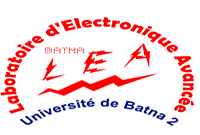In this paper, an electromagnetic approach based on cavity model in conjunction with electromagnetic knowledge was developed. The cavity model combined with London’s equations and the Gorter-Casimir two-fluid model has been improved to investigate the resonant characteristics of high Tc superconducting circular microstrip patch in the case where the patch is printed on uniaxially anisotropic substrate materials. Merits of our extended model include low computational cost and mathematical simplify. The numerical simulation of this modeling shows excellent agreement with experimental results available in the literature. Finally, numerical results for the dielectric anisotropic substrates effects on the operating frequencies for the case of superconducting circular patch are also presented.
In this paper, the effects of both anisotropies in the substrate and superstrate loading on the resonant frequency and bandwidth of high-Tc superconducting circular microstrip patch in a substrate-superstrate configuration are investigated. A rigorous analysis is performed using a dyadic Galerkin's method in the vector Hankel transform domain. Galerkin's procedure is employed in the spectral domain where the TM and TE modes of the cylindrical cavity with magnetic side walls are used in the expansion of the disk current. The effect of the superconductivity of the patch is taken into account using the concept of the complex resistive boundary condition. London's equations and the two-fluid model of Gorter and Casimir are used in the calculation of the complex surface impedance of the superconducting circular disc. The accuracy of the analysis is tested by comparing the computed results with previously published data for several anisotropic substrate-superstrate materials. Good agreement is found among all sets of results. The numerical results obtained show that important errors can be made in the computation of the resonant frequencies and bandwidths of the superconducting resonators when substrate dielectric anisotropy, and/or superstrate anisotropy are ignored. Other theoretical results obtained show that the superconducting circular microstrip patch on anisotropic substrate-superstrate with properly selected permittivity values along the optical and the non-optical axes combined with optimally chosen structural parameters is more advantageous than the one on isotropic substrate-superstrate by exhibiting wider bandwidth characteristic.
In this paper, an efficient full-wave analysis of a circular microstrip patch printed on suspended and composite substrates is performed using a dyadic Green’s function formulation. Galerkin’s technique is used in the resolution of the integral equation of the electric field. The TM set of modes issued, from the magnetic wall cavity model, are used to expand the unknown currents on the circular patch. The radiation patterns are expressed regarding the transforms of the currents. The convergence of the method is proven by calculating the resonant frequencies, half-power bandwidths, and quality factors for several configurations. The computed results are found to be in excellent agreement with those observed in the literature. The numerical results obtained show that the bandwidth increases with the increase in the thickness of the suspended or composite substrates, especially for low permittivity of the second layer. Also, it is demonstrated that the resonant frequencies of the circular microstrip patch on suspended and composite substrates can be adjusted to obtain the maximum operating frequency of the antenna. Finally, the effect of the presence of the second layer under the circular patch on the radiation patterns is also investigated.
